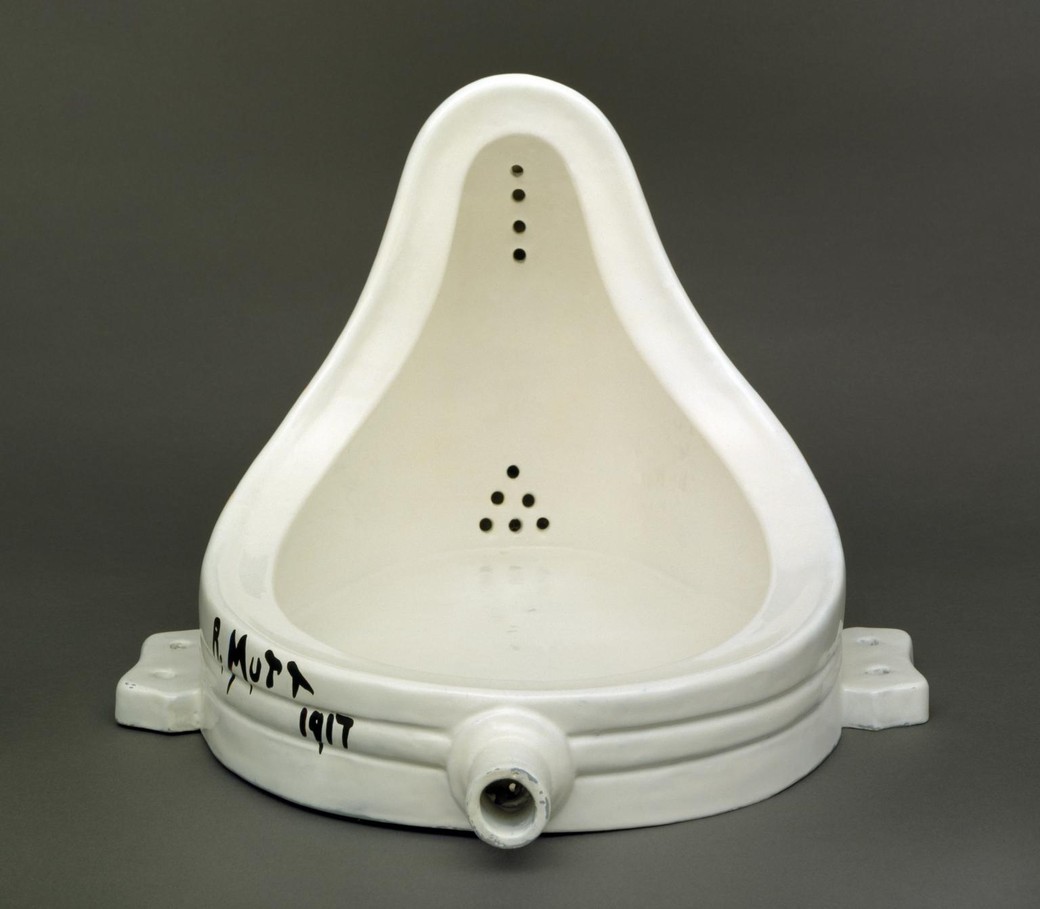
Duchamp’s Replica Readymades at the National Gallery of Canada
By Dr. Glyn Thompson. Lansing, MI.
9 April 2017 will mark the centenary of what is commonly regarded as the most important event in twentieth century art history, the submission of a urinal to the first exhibition of the Society of Independent Artists in New York, in 1917.
The National Gallery of Canada has long been applauded for its foresight in becoming in 1971 one of the first galleries in the world to acquire a set of replicas of Marcel Duchamp’s Readymades, authorised by the latter in 1964, including one of the most notorious works of art of the twentieth century, which the gallery website references as follows:
Marcel Duchamp is one of the most influential and innovative avant-garde artists of the
twentieth century. His introduction of the Ready-made object shocked the art world of his
day, and created a decisive shift in the modern perception of what constitutes a piece of
art.
The artist created works such as Bicycle Wheel, Bottle Dryer, and Fountain referring to
them as Ready-mades – ordinary objects that become elevated to the status of art through
intellectual consideration.
This anniversary offers the gallery an opportunity to review their understanding of the apocryphal event of 1917 and its purported significance, a revision that the gallery’s publicity suggests is long over due, for the website entry perpetuates a myth long past its sell-by date.
Whilst Duchamp’s all-pervasive influence on modern art practice is undeniable, there is however no evidence whatsoever that “his introduction of the Ready-made object shocked the art world of his day,” since none of the iconic Readymades that he designated between 1916 and 1918, in New York, were ever exhibited: all disappeared, with a single exception, a curry comb, which only emerged into the public domain with the installation of the Arensberg Collection in the 1950s: so much for shocking the art world.
And the very first replica of the lost Readymades to go on display was a bottle rack, at the Charles Ratton Gallery, in Paris, in 1936, nineteen years later: so much for shocking the art world of his day, in 1916.
The rest had disappeared without ever being exhibited, and so had no effect: so much for shocking the art world of 1916, and creating a decisive shift in the modern perception of what constitutes a piece of art.
The author of the statement that the readymades were “ordinary objects that became elevated to the status of art through intellectual consideration” really should know better, since countervailing facts – not opinions – have been in the public domain since 1982, when a letter written by Duchamp to his sister in Paris, on 15 January 1916, unexpectedly resurfaced, and was discussed by Francis M. Naumann in the Journal of the Archives of American Art. And this revealed the following – although not to Francis Naumann.
In the letter Duchamp informed his sister that he had recently configured a new genre of object that he called a Readymade, and this had nothing whatsoever to do with art, a statement worth repeating: according to Duchamp himself, this had nothing whatsoever to do with art – which means that there was no point in treating it as if it was, then, or now.
 Duchamp described the Readymade as an object that he bought, signed and appended with a legend in English – and that’s all: no artist’s choice, and no elevation to the status of art. Period. He even told his artist sister not to tear her hair out trying to understand it. This definition was never discussed in the period during which the Duchamp myth was configured in ignorance of its existence and importance: the definition of the Readymade that would enter the master narrative was a complete inversion of that which Duchamp had configured in 1916 at the very time that he designated the first examples, versions of which grace the National Gallery. This erroneous definition was the brainchild of Andre Breton, who formulated it, in complete ignorance of Duchamp’s 1916 definition, in 1935, revealing it in The Lighthouse of the Bride that was published in the 1935-66 winter issue of Le Minotaure. Breton’s – diametrically opposed – definition read as follows: a manufactured object that is promoted to the status of the art object by the choice of the artist.
Duchamp described the Readymade as an object that he bought, signed and appended with a legend in English – and that’s all: no artist’s choice, and no elevation to the status of art. Period. He even told his artist sister not to tear her hair out trying to understand it. This definition was never discussed in the period during which the Duchamp myth was configured in ignorance of its existence and importance: the definition of the Readymade that would enter the master narrative was a complete inversion of that which Duchamp had configured in 1916 at the very time that he designated the first examples, versions of which grace the National Gallery. This erroneous definition was the brainchild of Andre Breton, who formulated it, in complete ignorance of Duchamp’s 1916 definition, in 1935, revealing it in The Lighthouse of the Bride that was published in the 1935-66 winter issue of Le Minotaure. Breton’s – diametrically opposed – definition read as follows: a manufactured object that is promoted to the status of the art object by the choice of the artist.
In 1916, Andre Breton, who was working in a psychiatric ward in Nantes, knew nothing of Duchamp and his Readymades in New York. And since at that date his definition of 1935 had not been written, Duchamp’s Readymades could not have subscribed to it.
It would not be until the 1960s that Duchamp’s Readymades would impact on avant-garde art practice, courtesy of Breton’s false definition, whilst Duchamp smiled, twiddled his thumbs, and nodded and winked.
The author of the National Gallery statement would also appear to be unaware of the implications of the above for the status of the Bicycle Wheel, Bottle Drier and Fountain, the latter named not by Duchamp but a journalist reviewing the Independents’ show on the 10th of April in the New York Evening Herald: the urinal had not been submitted with any title attached.
For example, since Duchamp’s definition of the Readymade excludes anything but a single object, a wheel mounted in a pair of forks and inverted on a stool cannot qualify as such, irrespective of what Andre Breton imagined later: and given that the earliest evidence for the Roue de Bicyclette is a photograph taken by Henri-Pierre Roché of Duchamp’s studio in New York, in June 1918, no earlier speculative dating is secure.
Secondly, whilst the first replica of a readymade, a bottle rack, appeared in 1936, as with the others that followed, this was not true replica, since it was not a perfect copy of an original. And there is no proof that the latter ever achieved the status of a Readymade, for whilst in his letter of 1916 Duchamp gave his sister instructions as to how she must transform a bottle rack that he had purchased, in 1913, as a ready-made sculpture, into a substantive Readymade, there is no guarantee that she carried out his instructions: his letter to Suzanne of October 1916, asking her to confirm that she had fulfilled his instructions, appears never to have been answered. It probably disapoeared back into its utilitarian identity, and continues to server as a bottle dryer in a cellar on the Rue St-Hippolyte in Paris: you’ll know it from the absence of Duchamp’s signature that Suzanne forgot to sign it with, on the inside of the lowest band, in Flake White oilpaint.
The letter of 15 January 1916 containing Duchamp’s definition of the Readymade draws a clear distinction between a work of art – the bottle rack that Duchamp had bought as a ready-made sculpture in 1913 – and a Readymade – that same bottle rack to be transformed, in 1916, into a substantive Readymade – that wasn’t. In the first case, the adjective ‘ready-made’ predicates on the substantive ‘sculpture.’ In the second, the neologism ‘Readymade’ is itself a substantive, with no predicate. If there had been no substantive difference between the two genres – art and the Readymade – the grammatically punctilious Duchamp would not have drawn the distinction between them grammatically that he did.
 Thus the urinal submitted to the Independents cannot have been a Readymade, because Duchamp hadn’t submit it and only Duchamp was designating everyday objects as Readymades from 1916 onwards. The actual author, Elsa von Freytag Loringhoven, is not on record as actually knowing what a Duchampian readymade actually was, or of ever having used the word to describe anything, including the found objects that she – unlike Duchamp – elevated to the status of art. Duchamp had given up the production of art in 1912.
Thus the urinal submitted to the Independents cannot have been a Readymade, because Duchamp hadn’t submit it and only Duchamp was designating everyday objects as Readymades from 1916 onwards. The actual author, Elsa von Freytag Loringhoven, is not on record as actually knowing what a Duchampian readymade actually was, or of ever having used the word to describe anything, including the found objects that she – unlike Duchamp – elevated to the status of art. Duchamp had given up the production of art in 1912.
A found object works metaphorically – it’s shape alludes to another object, whilst a Readymade is metonym – a figure which in which the name of an attribute is substituted for that of the thing named, e.g, sceptre for authority, or scales for justice.
And a third is that, since in his letter of 11 April 1917 Duchamp described his female friend Elsa’s urinal as a sculpture, i.e., as art, he was distinguishing it from a readymade.
Perhaps Josée Drouin-Brisebois would like to explain to the citizenry of the capital how a Duchampian Readymade of 1916 or 1917 or 1918 could be art when in 1916, ’17 and ’18 Breton’s definition of a readymade did not exist, meaning that no such readymade by Duchamp could have possibly have subscribed to it, since Breton hadn’t told him – yet.









